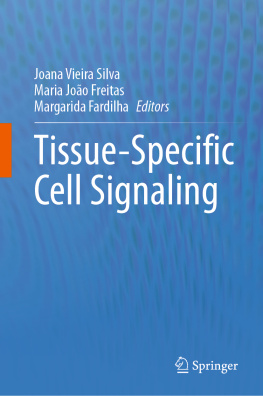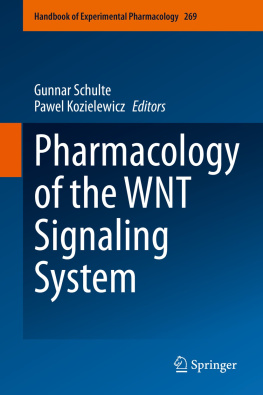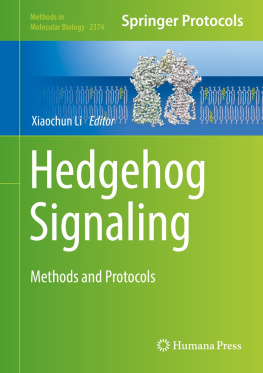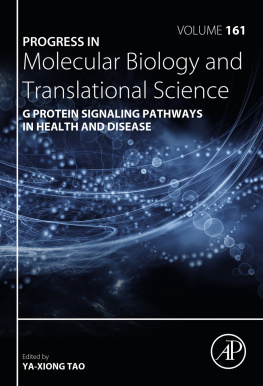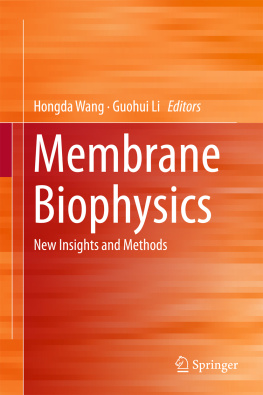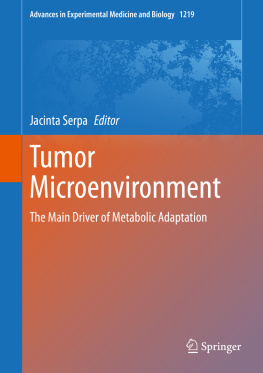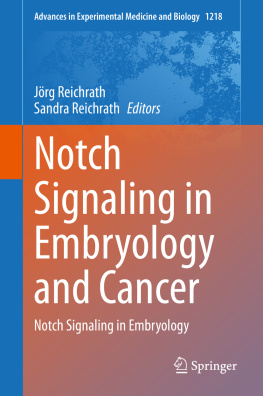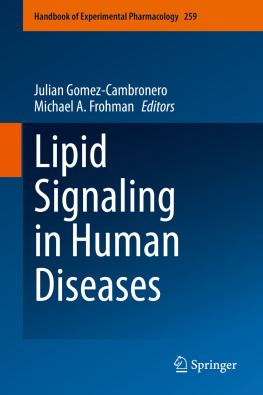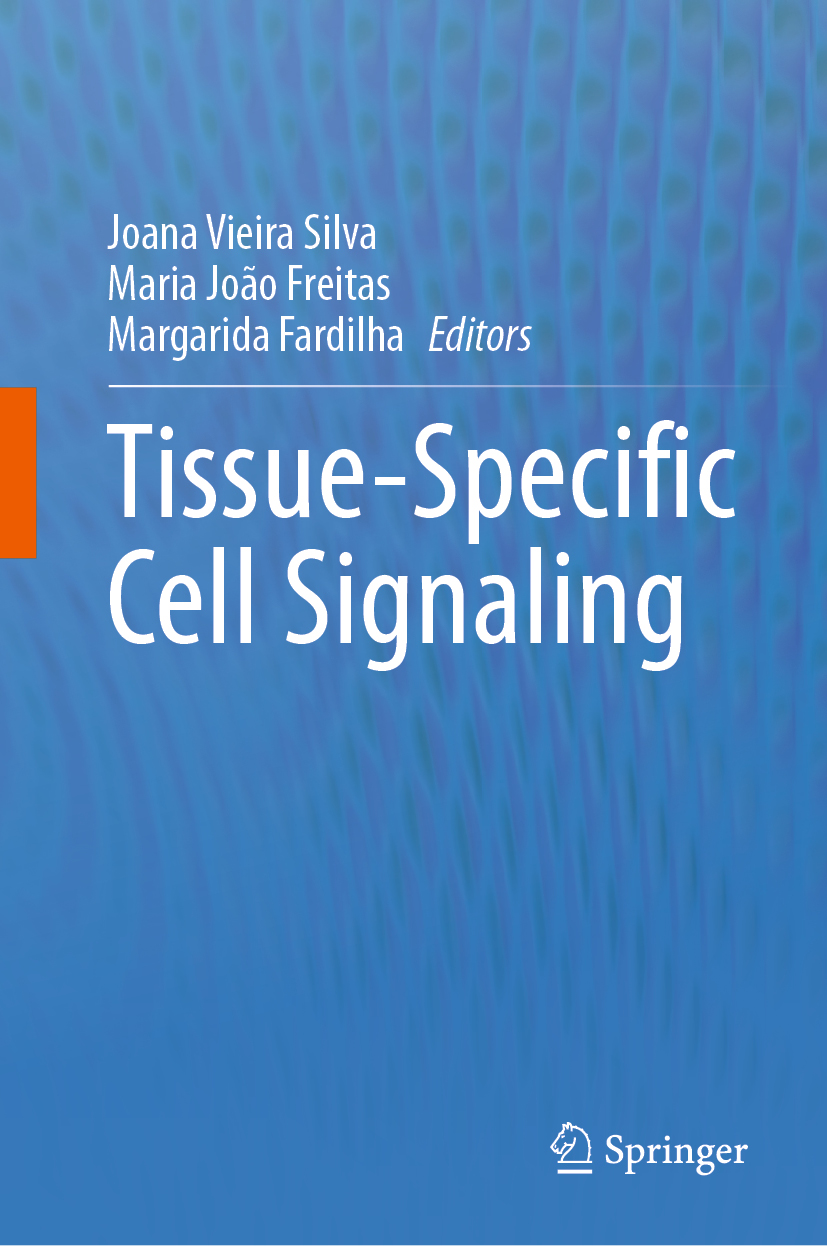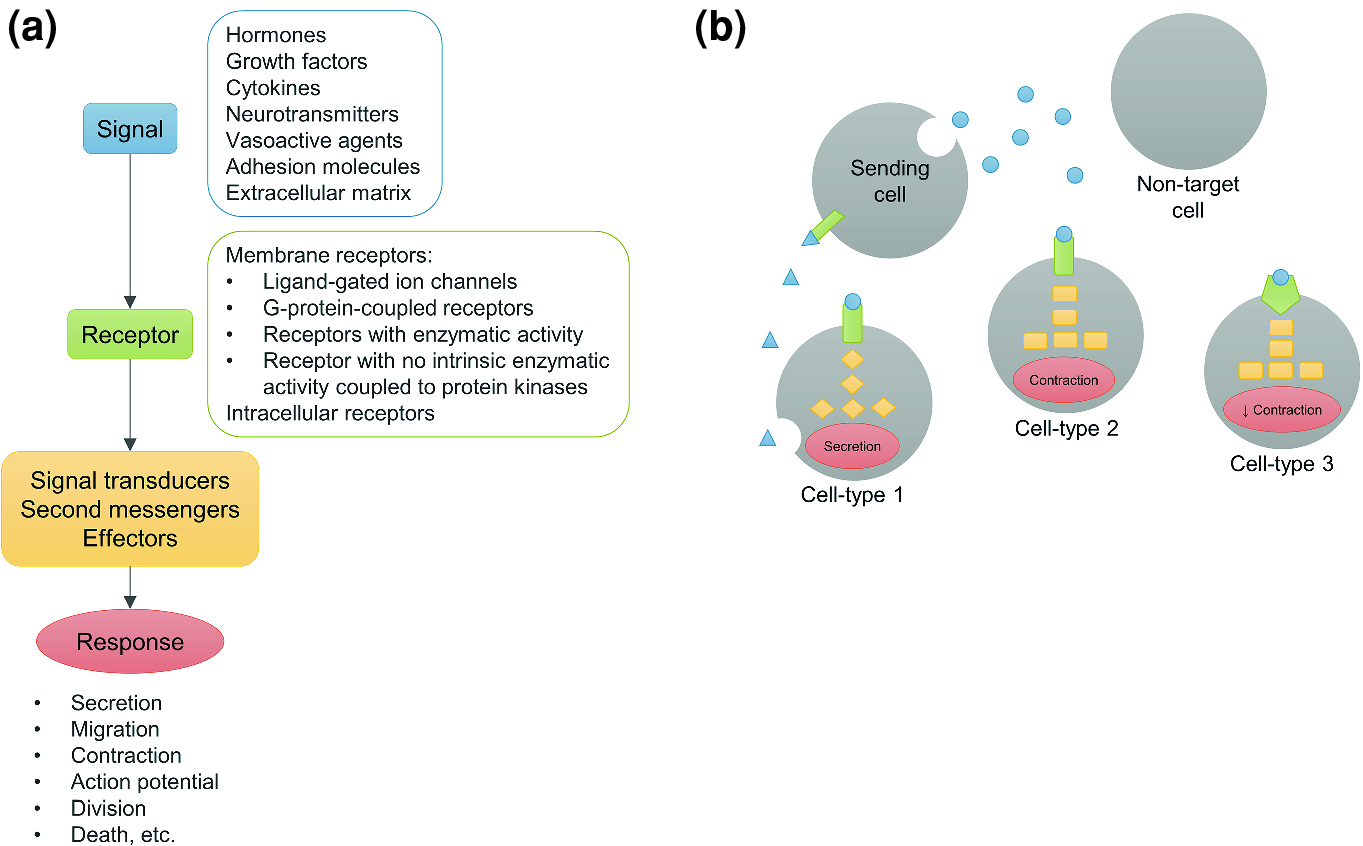Editors
Joana Vieira Silva
Laboratory of Signal Transduction, Department of Medical Sciences, Institute of BiomedicineiBiMED, University of Aveiro, Aveiro, Portugal
i3SInstituto de Investigao e Inovao em Sade, University of Porto, Porto, Portugal
Laboratory of Cell Biology, Unit for Multidisciplinary Research in Biomedicine (UMIB), Institute of Biomedical Sciences Abel Salazar (ICBAS), University of Porto, Porto, Portugal
Maria Joo Freitas
Laboratory of Protein Phosphorylation and Proteomics, Department of Cellular and Molecular Medicine, Faculty of Medicine, KU Leuven, Leuven, Belgium
Margarida Fardilha
Laboratory of Signal Transduction, Department of Medical Sciences, Institute of BiomedicineiBiMED, University of Aveiro, Aveiro, Portugal
ISBN 978-3-030-44435-8 e-ISBN 978-3-030-44436-5
https://doi.org/10.1007/978-3-030-44436-5
Chapters 3 and 15 are licensed under the terms of the Creative Commons Attribution 4.0 International License (http://creativecommons.org/licenses/by/4.0/). For further details see license information in the chapters.
Springer Nature Switzerland AG 2020
This work is subject to copyright. All rights are reserved by the Publisher, whether the whole or part of the material is concerned, specifically the rights of translation, reprinting, reuse of illustrations, recitation, broadcasting, reproduction on microfilms or in any other physical way, and transmission or information storage and retrieval, electronic adaptation, computer software, or by similar or dissimilar methodology now known or hereafter developed.
The use of general descriptive names, registered names, trademarks, service marks, etc. in this publication does not imply, even in the absence of a specific statement, that such names are exempt from the relevant protective laws and regulations and therefore free for general use.
The publisher, the authors and the editors are safe to assume that the advice and information in this book are believed to be true and accurate at the date of publication. Neither the publisher nor the authors or the editors give a warranty, expressed or implied, with respect to the material contained herein or for any errors or omissions that may have been made. The publisher remains neutral with regard to jurisdictional claims in published maps and institutional affiliations.
This Springer imprint is published by the registered company Springer Nature Switzerland AG
The registered company address is: Gewerbestrasse 11, 6330 Cham, Switzerland
Preface
Cells have evolved to sense external chemical and physical cues, transduce the signals intracellularly through molecular cascades, and generate an appropriate response. The outcome can be an altered gene-expression pattern or a change in cell shape or metabolism to optimize the use of nutrients or to avoid toxins. In multicellular organisms, signal transduction is also a key determinant of cell fate (proliferation, differentiation, or apoptosis) and cellcell interaction. Over the last few decades, numerous signaling cascades have been unraveled. They have revealed how signals are sensed at the molecular level and transduced to generate an integrated cellular and organismal response. Most recent textbooks on cell signaling highlight the components, design principles, and crosstalk of signal transduction cascades that are common to (most) cell types. This book takes a more top-down approach and focusses on signaling processes that are cell-type or organ specific. These specialized signaling processes are key to understanding organ specialization and integration, but also the development of diseases.
Chapter).
Mathieu Bollen
Leuven, Belgium
Acknowledgments
The authors acknowledge the support of Institute of BiomedicineiBiMED, University of Aveiro (UIDB/04501/2020); Unit for Multidisciplinary Research in Biomedicine (UMIB), University of Porto (Pest-OE/SAL/UI02015/2019); and Foundation for Science and Technology for the individual grant to J.V.S. (SFRH/BPD/123155/2016).
Introduction
Unicellular and multicellular organisms depend on efficient communication with the surrounding environment. The evolutionary development of a plethora of signaling components has ensured efficient ways of extra-, intra- and inter-cellular communications. This process is calledCell SignalingorCell Signal Transduction.
The basic cell signaling unit shared by most signaling pathways contains core functional components: the signals, their receptors, and effectors (Fig.b).
Fig. 1
Cell Signal Transduction refers to all processes involved in receiving and translating an extracellular signal, allowing the cell to respond appropriately.aMost signaling molecules (with some exception such as thyroid and steroid hormones and nitric oxide) act on plasma membrane receptors without penetrating the cell. Cells can synchronize and process multiple signals to generate a response.bThe response to an extracellular signal depends on the presence of a receptor and on the cellular context of the target cell. For instance, one cell-type can reply to the same signal with secretion, other with contraction and other with decreased rate of contraction. Cells that lack the appropriate receptor do not respond. If a target cell secretes a signal, then the target cell can affect the cell it received the signal from
The biochemical mechanisms of signal transduction are quite similar among cells: similar proteins and protein modules are used to detect and respond to signals. For example, cAMP acts as a second messenger in bacteria, fungi and animals. Nonetheless, while the basic signal components are the same or similar they may be used in very different arrangements and biological processes. In fact, cAMP is synthesized through different and distantly related enzymes in bacteria, fungi and animals and acts on different proteins.
In the simplified picture of a cell signaling pathway described above the signaling components act sequentially and a certain signal induces a cell response. Today, it is well established that signaling pathways are much more complex. Signaling molecules/components act in different signaling pathways (pathway crosstalk) and may have multiple downstream partners (pathway branching). Pathway branching and crosstalk originate highly synchronized complex signaling networks conveying plasticity, robustness and variability.
Tissue/organ specialization adds another level of complexity in multicellular organisms. This depends on the synchronized regulation of many physiological events such as cell growth and division, cell morphology, metabolism, differentiation and development. Thus, the tight coordination of gene expression, protein translation programs (including splicing, post-translational modifications and stability) and subcellular localizations is of utmost relevance. The availability of signaling components and their interconnections that confer cell-specific signal transduction patterns is the basis for the present textbook on Tissue-Specific Cell Signaling.

